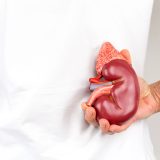As the leading cause of death in the U.S., cardiovascular disease is a major public health problem. The battle against cardiovascular disease is fought on many fronts – including prevention, detection and treatment. When it comes to detection, we typically rely on medically devised measurements for evaluating our heart’s health. However, most health professionals fail to recognize some of the body’s more obscure signals that could be indicative off a cardiovascular problem.
Ranging from regular screening to specific diagnostic testing, there are several measurements physicians analyze to determine the risk or presence of cardiovascular disease. Considerations such as a person’s heart disease risk factors, history of heart problems and current symptoms help physicians determine which measurements and tests should be performed. Some of the ways the medical community assesses cardiovascular health include:
- Blood Pressure
- Blood Cholesterol Levels
- Resting Electrocardiogram (ECG or EKG)
- Chest X-ray
- Echocardiogram
- Exercise Stress Test (Treadmill Test)
- Computed Tomography (CT) Scan
- Magnetic Resonance Imaging (MRI)
- Magnetic Resonance Angiography (MRA)
The tests and measurements listed above are essential for medical professionals to detect and monitor heart problems – our best way to minimize heart disease’s potentially catastrophic outcome. However, many alternative healthcare providers may be able to identify individuals at risk prior to commencing with the traditional measurements and tests listed above.
Several types of alternative healthcare practitioners observe seemingly innocuous physical attributes as clues that there may be a potential weakness or blockage in the cardiovascular system. Based on folklore, traditional medical theories or case studies, these signs remain unproven scientifically and, thus, are generally not accepted by western-trained doctors.
If any of the subtle indicators referenced exist, it does not conclusively mean that there is a heart problem. Rather, they generally indicate that a person either currently has or is susceptible to developing a heart problem. Although most of the following five clues appearing on the body are considered by western doctors to be normal, they may foretell of a heart problem:
- Eyelid Bumps – Tiny yellow bumps in the inner-corner of the eye could be fatty deposits – a sign of high cholesterol. Those with high cholesterol are more vulnerable to atherosclerosis, the cardiovascular condition describing hardening of the arteries.
- Earlobe Crease – According to Traditional Chinese Medicine (TCM) beliefs, a diagonal crease in the earlobe could be an indication of future heart troubles. A large National Institutes of Health study suggested that a diagonal crease in the earlobes could be linked to heart attack risk, possibly having to do with blocked circulation throughout the body.
- Nose Changes – The tip of the nose often becomes puffy before a heart attack. In addition, a nose tip that is grey or white in color may be a manifestation of poor oxygenation from circulatory difficulties.
- Tongue Tip – In TCM, heart health is reflected on the tip of the tongue. A deep, narrow, central crack extending to the tongue’s tip, or a tip that is pointed, indented, has protrusions, is curled up or curled under indicate a cardiovascular imbalance. Such an imbalance could lead to heart disease.
- Cherry Angiomas – Considered to be harmless, non-cancerous skin growths that are bright red, small and smooth, cherry angiomas most commonly appear after age 30. Some healthcare providers insist that cherry angiomas are a result of high blood pressure. Research shows that stress can be a contributing factor to developing cherry angiomas, and high stress levels are known to increase the risk for heart disease.
While the majority of people are not accustomed to paying attention to subtle variations in their physical body, checking for such changes could pay off. Variations like eyelid bumps, earlobe creases, nose and tongue tip changes and cherry angiomas could be signs of an underlying medical condition. Although none of these indicators are dangerous, they still could be your body’s attempt to signal potential problems – and therefore should be taken as a directive to nurture your cardiovascular health.




